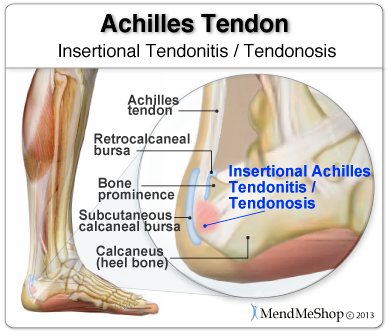Bone Spur in Heel and Achilles Tendon: The 2 Common Types of Heel Spurs
What are the two common types of heel spurs? What causes them? How are they different from each other? Find the answers to these questions and more in this detailed article.
Understanding the Two Common Types of Heel Spurs
Bone spurs can develop on almost any bone, including the heel, and sometimes produce pain and other symptoms. Two painful heel conditions are associated with the formation of bone spurs:
Heel Spur Syndrome
Heel spur syndrome involves the formation of a bone spur at the bottom of the heel, on the sole of the foot. People who have a common foot condition called plantar fasciitis can develop these spurs, which are often referred to as heel spurs or calcaneal spurs. These plantar spurs are hook-like and are normally associated with heel spur syndrome.
Heel spurs develop as a bone’s response to stress from straining foot muscles and ligaments, over-stretching the plantar fascia, and repeated tearing of the thin lining of the heel bone. Heel spurs often occur in athletes participating in sports involving running and jumping, and are also associated with age, obesity, and osteoarthritis.
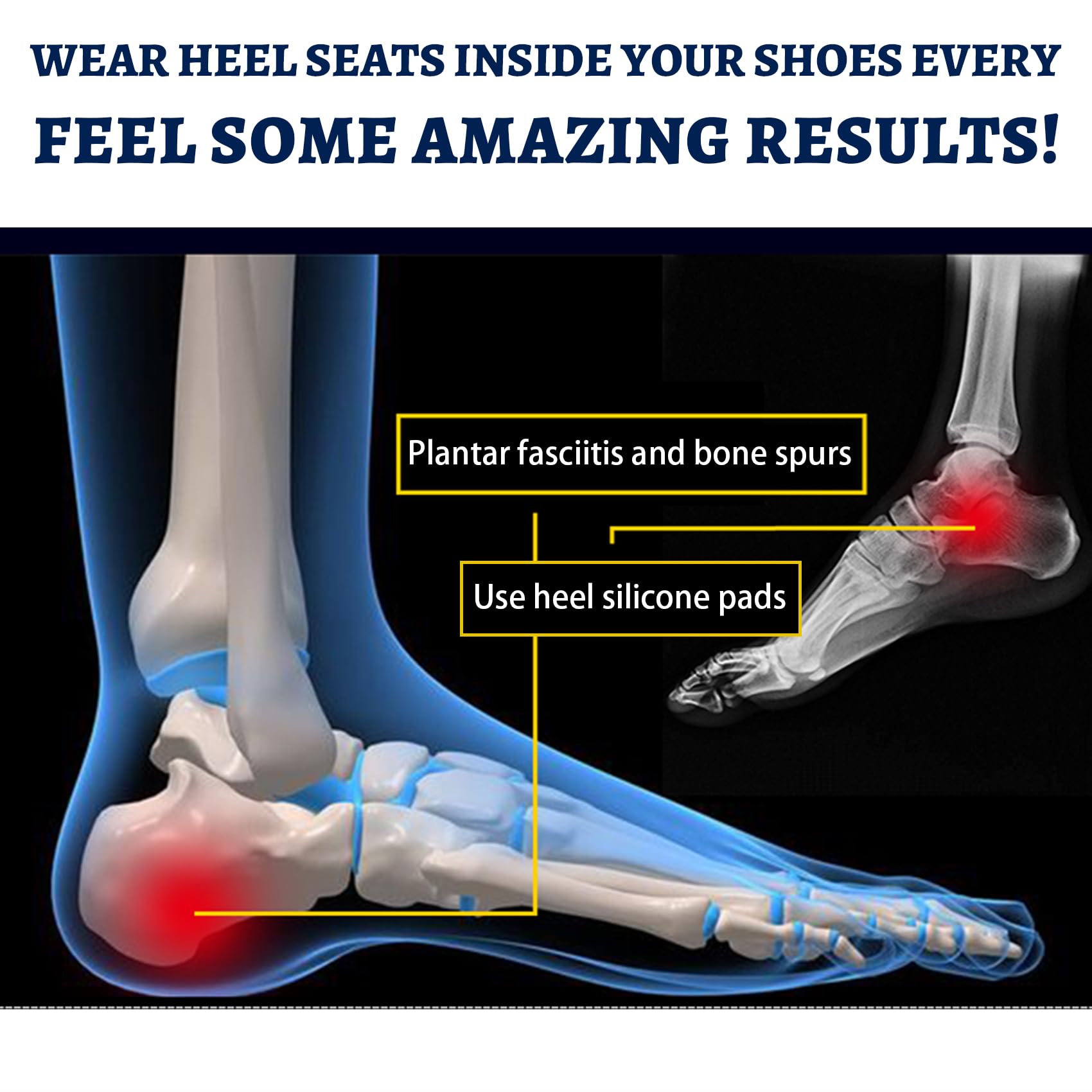
The good news is that the vast majority of heel spurs usually do not cause pain. In fact, only 5% of people with heel spurs have foot pain.
Insertional Achilles Tendonitis
Insertional Achilles tendonitis affects the back of the heel, where the Achilles tendon inserts into the heel bone. The bone spur gradually develops around the tendon where it inserts into (attaches to) the bone. This type of spur, known as a dorsal spur, is commonly related to insertional Achilles tendonitis.
The bone spur can irritate the Achilles tendon, potentially causing more tendon damage and pain. In addition, the inflamed and/or damaged portion of the Achilles tendon can calcify, or harden.
Insertional Achilles tendonitis is associated with decreased ankle range of motion and increasing age—people who are affected are often in their 40s, 50s, or 60s. It is different than non-insertional Achilles tendonitis, which causes pain in the lower calf, where the Achilles tendon and calf muscle meet.
How Do Heel Spurs Develop?
Bone spurs, also known as enthesophytes, are a common condition and the likelihood of developing them increases with age. They can form in response to various stresses and injuries to the foot and heel.
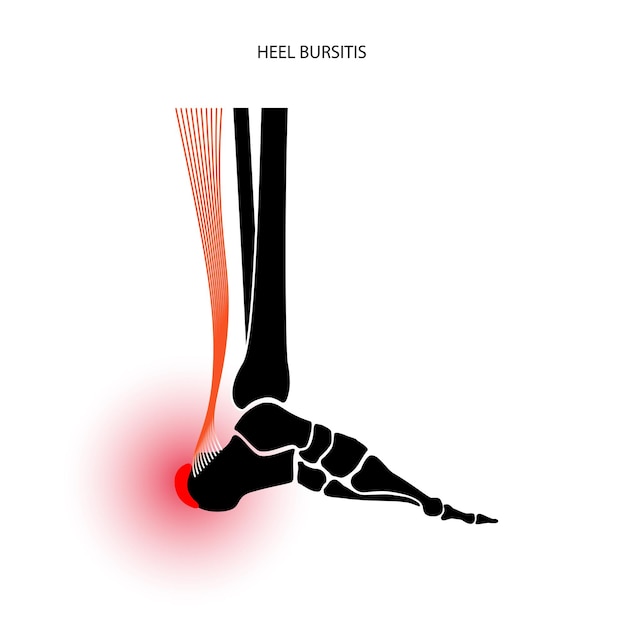
For heel spur syndrome, the spur forms where the plantar fascia—a band of fibrous tissue stretching along the bottom of the foot—connects to the heel bone. The spur grows in the direction of the plantar fascia and often forms a hook-like shape.
In the case of insertional Achilles tendonitis, the bone spur develops around the tendon where it inserts into the heel bone. This can lead to further irritation and damage to the Achilles tendon.
Symptoms and Causes of Heel Spurs
While heel spurs are common, they do not always cause pain. In fact, only about 5% of people with heel spurs experience foot pain.
Heel spur syndrome is often associated with plantar fasciitis, a condition characterized by pain and inflammation in the plantar fascia. The spur can exacerbate the pain and inflammation.
Insertional Achilles tendonitis, on the other hand, causes pain and inflammation at the back of the heel where the Achilles tendon attaches to the heel bone. The bone spur in this case can further irritate the tendon.

Factors that can contribute to the development of heel spurs include:
- Overuse and repetitive stress on the feet, such as from running, jumping, or other high-impact activities
- Obesity, which increases the stress on the feet
- Aging, as the risk of developing bone spurs increases with age
- Structural foot problems, such as a high arch or flat feet, which can alter the mechanics of the foot and lead to excessive stress
Diagnosing and Treating Heel Spurs
Heel spurs are usually diagnosed through a physical examination and imaging tests, such as X-rays or MRI scans.
Treatment for heel spurs often focuses on addressing the underlying condition, such as plantar fasciitis or Achilles tendonitis. Conservative treatments may include:
- Rest and activity modification
- Anti-inflammatory medications
- Stretching and strengthening exercises
- Supportive footwear or orthotics
- Physical therapy
In some cases, more advanced treatments such as steroid injections, shockwave therapy, or even surgery may be necessary to address persistent or severe heel spur-related pain.
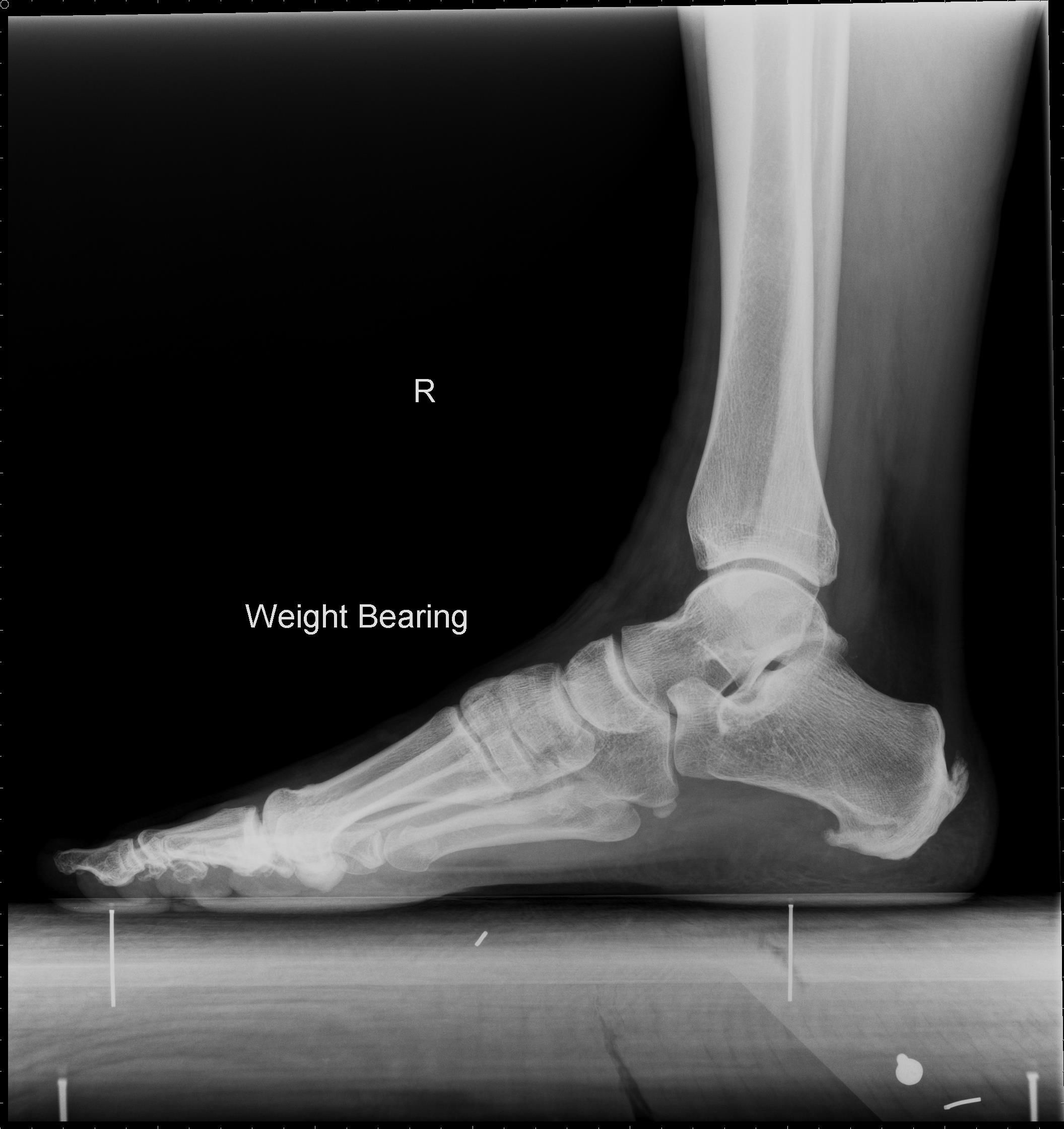
Preventing Heel Spurs
While heel spurs cannot always be prevented, there are steps you can take to reduce your risk:
- Maintain a healthy weight to avoid excessive stress on the feet
- Wear supportive, well-fitting shoes, especially during physical activity
- Stretch and strengthen the muscles and tendons in the feet and lower legs
- Gradually increase the intensity and duration of physical activity to avoid overuse injuries
- Seek medical attention for any persistent heel or foot pain to address the underlying issue
Conclusion
Heel spurs are a common condition that can develop in response to various stresses and injuries to the feet and heels. While they are often asymptomatic, they can contribute to painful conditions like plantar fasciitis and Achilles tendonitis. Understanding the two main types of heel spurs, their causes, and the available treatment options can help individuals manage this condition and find relief from heel pain.
The 2 Common Types of Heel Spurs
Bone spurs can develop on almost any bone, including the heel, and sometimes produce pain and other symptoms. Two painful heel conditions are associated with the formation of bone spurs:
- Heel spur syndrome involves the formation of a bone spur at the bottom of the heel, on the sole of the foot. People who have a common foot condition called plantar fasciitis can develop these spurs, which are often referred to as heel spurs or calcaneal spurs.
- Insertional Achilles tendonitis can be associated with bone spurs at the back of the heel, where the Achilles tendon inserts into the bone.
Two painful heel conditions are associated with the formation of bone spurs. Dorsal spurs are commonly related to insertional Achilles tendonitis, and plantar spurs are normally associated with heel spur syndrome.
Bone spurs that develop with plantar fasciitis or Achilles tendonitis are sometimes called by their medical name, enthesophytes.
See Plantar Fasciitis Diagnosis
Bone spurs are common, and the likelihood of developing them increases with age.
1
Bone Spur. Reed Group MD Guidelines website. http://www.mdguidelines.com/bone-spur Accessed July 8, 2016.
See What Is a Bone Spur?
advertisement
Heel Spur Syndrome
Plantar spurs are hook-like and are normally associated with heel spur syndrome.
Heel spur syndrome is a condition associated with heel spurs, bony protrusions that grow on the bottom of the heel. A heel spur forms where the plantar fascia—band of fibrous tissue stretching along the bottom of the foot—connects to the heel bone. The spur grows in the direction of the plantar fascia and often forms a hook-like shape.
See Is Heel Pain Caused by Heel Spurs or Plantar Fasciitis?
Heel spurs develop as a bone’s response to stress from:
- Straining foot muscles and ligaments
- Over-stretching the plantar fascia
- Repeated tearing of the thin lining of the heel bone
There is good news as it relates to these heel spurs.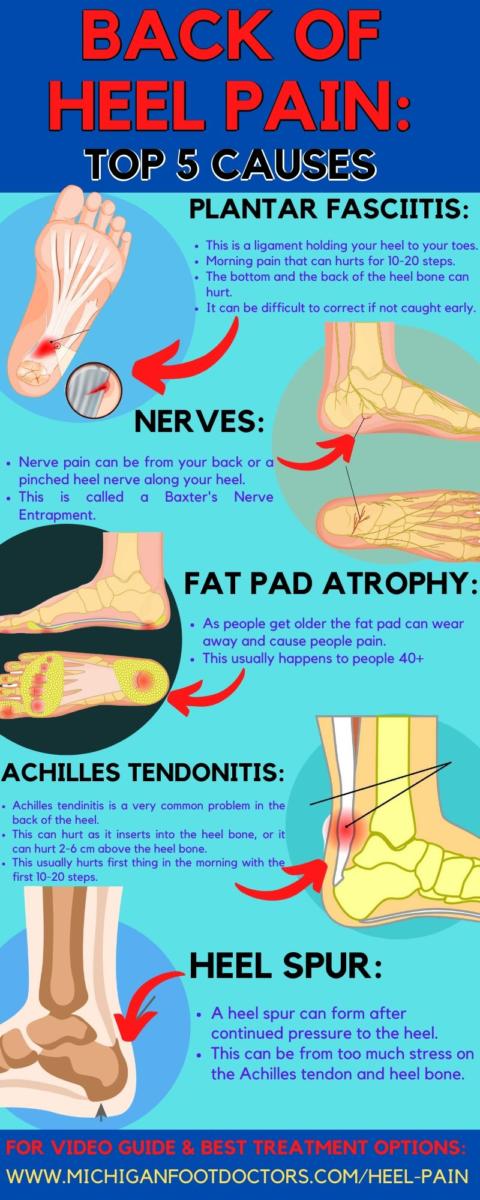 The vast majority of heel spurs usually do not cause pain. In fact, only 5% of people with heel spurs have foot pain.
The vast majority of heel spurs usually do not cause pain. In fact, only 5% of people with heel spurs have foot pain.
2
Plantar Fasciitis and Bone Spurs. American Academy of Orthopedic Surgeons website. http://orthoinfo.aaos.org/topic.cfm?topic=A00149&webid=23D4 Last reviewed June 2010. Accessed July 8, 2016.
Heel spurs often occur in athletes participating in sports involving running and jumping. They are also associated with age, obesity, and osteoarthritis.
See Common Running Injuries: Foot Pain
Insertional Achilles Tendonitis
Dorsal spurs are commonly related to insertional Achilles tendonitis.
Insertional Achilles tendonitis affects the back of the heel, where the Achilles tendon inserts into the heel bone. The bone spur gradually develops around the tendon where it inserts into (attaches to) the bone.
See Achilles Tendonitis and Tendon Injuries
The bone spur can irritate the Achilles tendon, potentially causing more tendon damage and pain.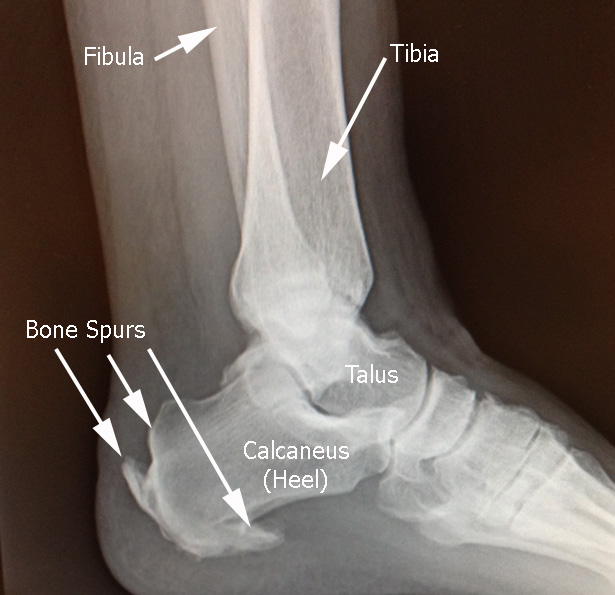 In addition, the inflamed and/or damaged portion of the Achilles tendon can calcify, or harden.
In addition, the inflamed and/or damaged portion of the Achilles tendon can calcify, or harden.
See Causes and Risk Factors for Achilles Tendon Damage
advertisement
Insertional Achilles tendonitis is associated with decreased ankle range of motion and increasing age—people who are affected are often in their 40s, 50s, or 60s.
3
Insertional Achilles Tendinitis. American Orthopaedic Foot & Ankle Society.https://www.aofas.org/footcaremd/conditions/ailments-of-the-ankle/Pages/Insertional-Achilles-Tendinitis.aspx Accessed May 6, 2016.
Achilles tendonitis usually develops gradually and is not linked with a single incident or trauma. Jumping and running can exacerbate this condition, along with negotiating stairs, making inflammation and heel pain worse.
See Diagnosing Achilles Pain
Insertional Achilles tendonitis is different than non-insertional Achilles tendonitis, which causes pain in the lower calf, where the Achilles tendon and calf muscle meet.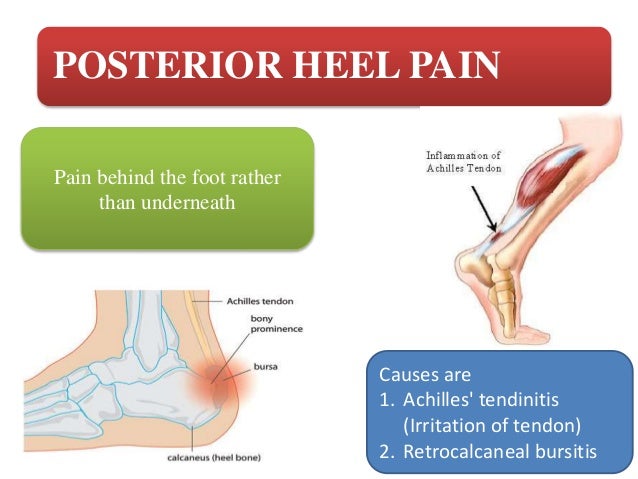
See Achilles Tendon Conditions Signs and Symptoms
Dr. Phillip Walton, Jr. is an orthopedic surgeon specializing in foot and ankle injuries and general orthopedics. He practices with Resurgens Orthopaedics and has several years of experience performing adult reconstruction of the foot and ankle, as well as total ankle replacement surgery.
- 1
Bone Spur. Reed Group MD Guidelines website. http://www.mdguidelines.com/bone-spur Accessed July 8, 2016. - 2
Plantar Fasciitis and Bone Spurs. American Academy of Orthopedic Surgeons website. http://orthoinfo.aaos.org/topic.cfm?topic=A00149&webid=23D4 Last reviewed June 2010. Accessed July 8, 2016. - 3
Insertional Achilles Tendinitis. American Orthopaedic Foot & Ankle Society.https://www.aofas.org/footcaremd/conditions/ailments-of-the-ankle/Pages/Insertional-Achilles-Tendinitis. aspx Accessed May 6, 2016.
aspx Accessed May 6, 2016.
- Share on Facebook
- Share on Pinterest
- Share on Twitter
- Subscribe to our newsletter
Email this article
advertisement
Editor’s Top Picks
Plantar Fasciitis: Initial Treatment Options
Treating a Painful Achilles Tendon
Common Running Injuries: Pain in the Ankle or Back of the Heel
Plantar Fasciitis: Injections and Prolotherapy
Injections and Surgery to Treat Achilles Pain
Nonsurgical, Surgical, and Minimally Invasive Treatment Options for Plantar Fasciitis
When Heel Pain Is Caused by Bone Spurs
Like some other tissues in the body, bones can regenerate themselves and develop new growth.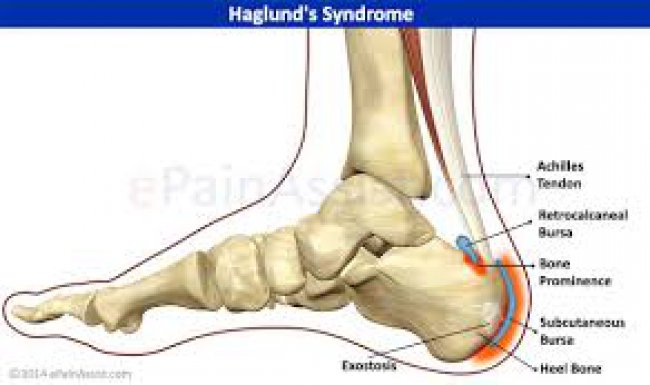 Unfortunately, sometimes the new growth comes in the form of an irregular protrusion on the bone known as a spur.
Unfortunately, sometimes the new growth comes in the form of an irregular protrusion on the bone known as a spur.
See What Is a Bone Spur?
Plantar fasciitis and heel spur syndrome can both be treated through physical therapy. See Plantar Fasciitis: Initial Treatment Options
Bone spurs are frequently harmless and often go undetected. But if they impinge on nearby soft tissues like tendons or ligaments, they can cause pain and immobility.
advertisement
Bone spurs can occur at many sites in the body, but there are two common sites in the heel where spurs can cause pain and interfere with your ability to do activities that involve running and jumping.
See The 2 Common Types of Heel Spurs
This guide explains the causes and symptoms of both types of heel spur:
Pain on the bottom of the heel toward the front (just behind the arch) may be the result of heel spur syndrome. This occurs when a bone spur forms at the spot where the plantar fascia, a fibrous band that runs down the sole of the foot, inserts into the heel bone.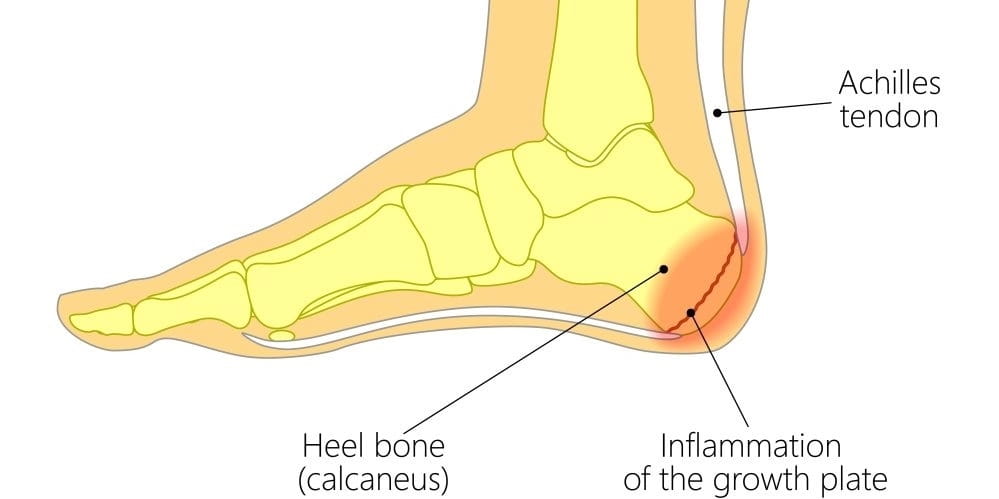
See Is Heel Pain Caused by Heel Spurs or Plantar Fasciitis?
But the heel pain may not be caused by the bone spur. In fact, it’s much more likely the pain is the result of injury or inflammation in the planta fascia itself: plantar fasciitis. Even if imaging results reveal the presence of a bone spur, it’s probably not responsible for the pain.
See Plantar Fasciitis Symptoms
But whether the pain was caused by bone spur syndrome or plantar fasciitis, both have similar initial treatment recommendations: resting, changing footwear, and stretching the calf and plantar fascia.
See Plantar Fasciitis: Initial Treatment Options
Pain on the back of the heel
Another spot that’s susceptible to the growth of bone spurs is at the top and back of the heel, where the heel bone connects with the Achilles tendon.
See Achilles Tendon Conditions Signs and Symptoms
A bone spur in this location can irritate the Achilles tendon, causing pain and inflammation—this is known as insertional Achilles tendonitis.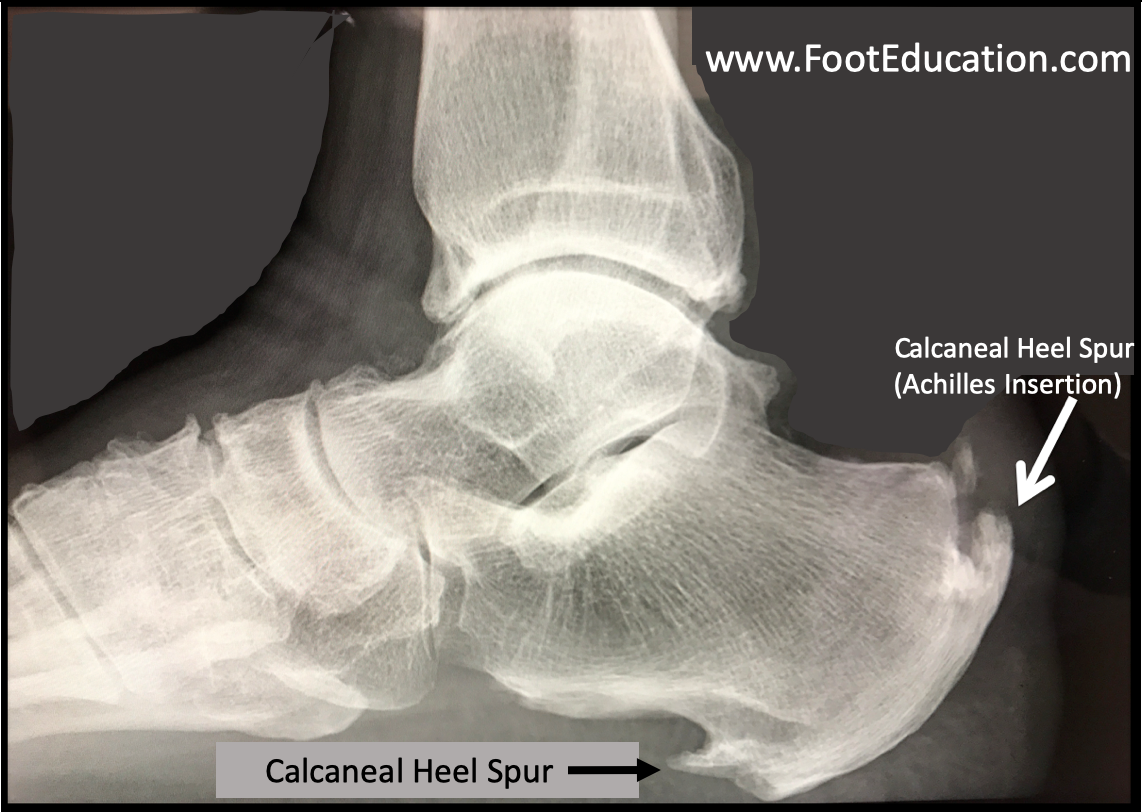 It usually develops over time and is more likely to affect people in their 40s, 50s, or 60s.
It usually develops over time and is more likely to affect people in their 40s, 50s, or 60s.
See Common Running Injuries: Pain in the Ankle or Back of the Heel
Insertional Achilles tendonitis is different than regular Achilles tendonitis, which causes pain higher up, at the bottom of the calf.
See Diagnosing Achilles Pain
Bone spurs can be treated nonsurgically and surgically, but the first step is to treat the inflamed structure (like the plantar fascia or Achilles tendon) that triggered the spur in the first place.
Learn more:
Achilles Tendonitis and Tendon Injuries
Plantar Fasciitis Risk Factors
Carrie DeVries worked as the content marketing manager at Veritas Health. Carrie combined a background of writing and editing, marketing, and patient education to best serve the consumers, patients, and physicians who rely the Veritas Health sites for information.
- Share on Facebook
- Share on Pinterest
- Share on Twitter
- Subscribe to our newsletter
Email this article
advertisement
Editor’s Top Picks
What Is a Bone Spur?
Achilles Tendon Conditions Signs and Symptoms
What Is Plantar Fasciitis?
Is Heel Pain Caused by Heel Spurs or Plantar Fasciitis?
Treating a Painful Achilles Tendon
Diagnosing Achilles Pain
| |||||||||||||||||||||||||||
© 2021 – Dr. med. Erich H. Rembeck – Zentrum für Orthopädie, Sportmedizin und Rehabilitation – Imprint | |||||||||||||||||||||||||||
Heel spur, causes, symptoms, treatment
Heel spur is a bony growth in the plantar surface of the calcaneus. Its appearance is associated with constant irritation of the place of attachment to the heel bone of the plantar aponeurosis. This irritation usually occurs with increased physical exertion on the foot.
The main cause of the formation of bone outgrowth in the area of the calcaneus is the constant irritation of the place of attachment to the bone of the tendons or ligaments, in particular, the plantar aponeurosis. As a result of constant irritation in this area, inflammation occurs. That is what is causing the pain. Gradually, the place of attachment of the inflamed ligament or aponeurosis undergoes “calcification” – that is, as if “impregnated” with calcium salts. In this period, when radiography of the foot, you can see the shadow of the bone growth – osteophyte .
As a result of constant irritation in this area, inflammation occurs. That is what is causing the pain. Gradually, the place of attachment of the inflamed ligament or aponeurosis undergoes “calcification” – that is, as if “impregnated” with calcium salts. In this period, when radiography of the foot, you can see the shadow of the bone growth – osteophyte .
Major risk factors for heel spurs :
- Age over 40 years.
- Comorbidities in the joints of the foot, such as osteoarthritis or rheumatoid arthritis.
- Violation of blood microcirculation in the foot.
- Other degenerative diseases.
Symptoms of a heel spur
Symptoms of a heel spur do not appear immediately after the formation of a bone growth. Due to the proximity of the tendons, a heel spur can cause constant pain in the foot. Heel spur pain is described as similar to toothache.
It should be noted that the pain of a heel spur is not due to the pressure of body weight on the spur itself, but due to inflammation of the soft tissues around the spur. The pressure of these inflamed tissues, for example, when stepping on the heel, leads to sharp pains. Usually, pain most often occurs at the very beginning of walking. This is explained as follows. At rest, the nerves and capillaries in the area of the inflamed tissue, as it were, adapt to the rest of the foot. However, with a sharp start of movement, the vessels and nerves do not have time to adapt to new conditions. As a result, pain occurs.
The pressure of these inflamed tissues, for example, when stepping on the heel, leads to sharp pains. Usually, pain most often occurs at the very beginning of walking. This is explained as follows. At rest, the nerves and capillaries in the area of the inflamed tissue, as it were, adapt to the rest of the foot. However, with a sharp start of movement, the vessels and nerves do not have time to adapt to new conditions. As a result, pain occurs.
Diagnosis
Performed by routine inspection and feel of the sole and heel. At the same time, the most painful point is located. The spur itself is usually not palpable, however, due to chronic inflammation of the soft tissues, their compaction can develop, which can be felt.
X-ray of the foot allows to clarify the diagnosis. In this case, the bone growth is visible on the x-ray.
Heel spur treatment
Treatment of a heel spur often is carried out conservatively and is aimed at three main points:
- Elimination of inflammation of the soft tissues around the spur;
- Prevention of inflammation;
- Elimination of the heel spur itself.

Patients come to the Orthopedics and Sports Injury Clinic of the Zaporozhye Regional Hospital with different problems, but with the same goal – to move freely again without pain and enjoy life. Natalya Borisovna from the Tokmak region was deprived of this happiness by a heel spur.
A woman says that she has suffered from heel spurs for years. I tried to defeat inflammation with the help of physiotherapy, all kinds of medicines and folk remedies, but they did not solve the problem, but only dulled the pain in the joint. Own house in the village, household, work – it became more and more difficult to live in the same rhythm. One day, Natalia Borisovna was suggested to go to Orthopedics and Sports Injury Clinic , one of the best in Ukraine.
After consultation, the diagnosis of heel spur » was confirmed – the bone growth was clearly visible on the x-ray. At the appointment, the specialists of the clinic explained to the woman that the methods she had hoped for were effective only at the very beginning of the disease. And since Natalya Borisovna’s heel spur has been preventing her from living a normal life for years, the operation was the only right decision. Moreover, it was by no means impossible to delay the intervention.
And since Natalya Borisovna’s heel spur has been preventing her from living a normal life for years, the operation was the only right decision. Moreover, it was by no means impossible to delay the intervention.
“The patient needed to have her spur removed as soon as possible. She was at high risk of tearing her Achilles tendon where it attaches to her calcaneus. If we had not carried out the treatment, the growths would have become more and more. Therefore, in order to prevent a complex and risky operation to restore the Achilles tendon, we decided not to waste time and remove the spur,” comments Ivan Zabelin, head of the Orthopedics and Sports Injury Clinic.
Rengen-pred to surgery an X-ray of the foot after surgery
during the intervention of the orthopedist of the clinic using low-traumatic techniques removed the resulting growth, so now nothing will prevent Natalia Borisovna from moving normally. The patient is now feeling much better and is already planning treatment for a heel spur on her second leg.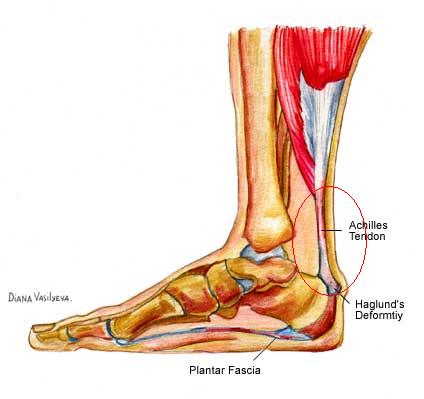

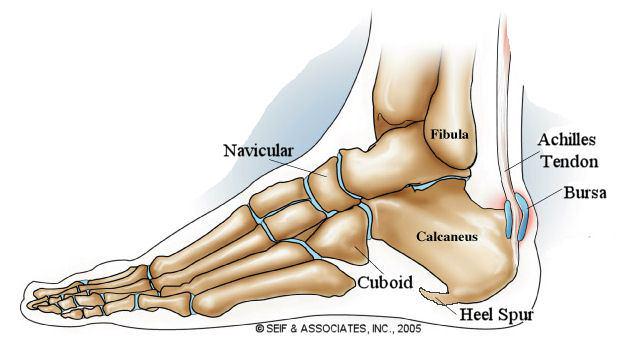 aspx Accessed May 6, 2016.
aspx Accessed May 6, 2016. In this case, the bony growth on the back of the heel bone presses on the Achilles tendon and on the bursa (retrocalcaneal bursa), resulting in inflammation of both the tendon itself (tendinitis) and the bursa (retrocalneal bursitis). If the disease is in its initial form, then it is advisable to start with conservative ones, i.e. non-surgical measures, eg. with physiotherapy. The main objective of these activities is to relieve pain by unloading the problem area and relieving inflammation.
In this case, the bony growth on the back of the heel bone presses on the Achilles tendon and on the bursa (retrocalcaneal bursa), resulting in inflammation of both the tendon itself (tendinitis) and the bursa (retrocalneal bursitis). If the disease is in its initial form, then it is advisable to start with conservative ones, i.e. non-surgical measures, eg. with physiotherapy. The main objective of these activities is to relieve pain by unloading the problem area and relieving inflammation. Only surgical treatment can help in this case.
Only surgical treatment can help in this case.
